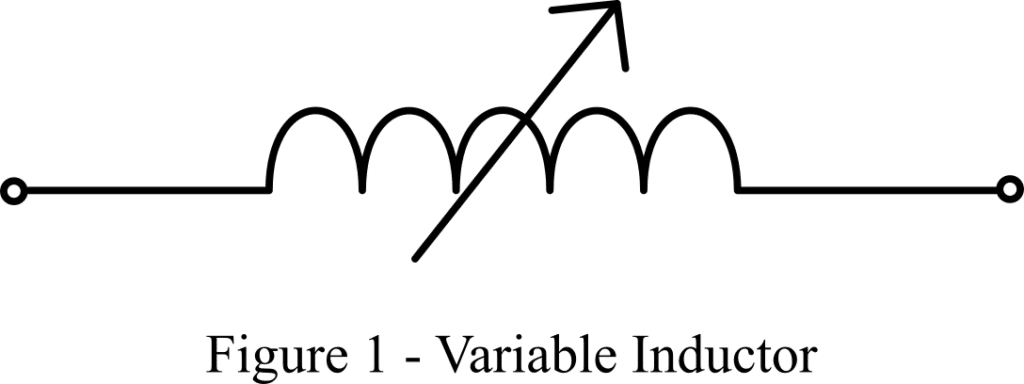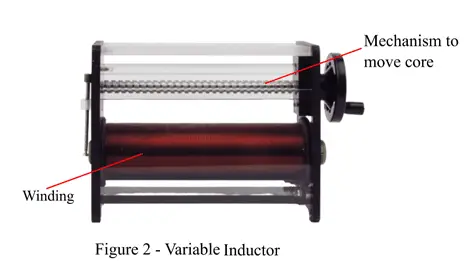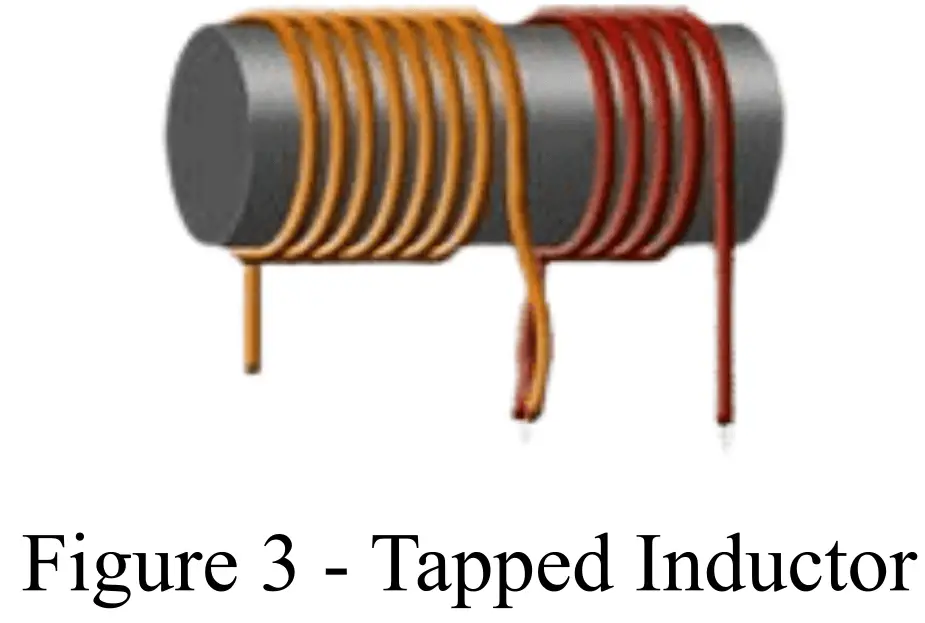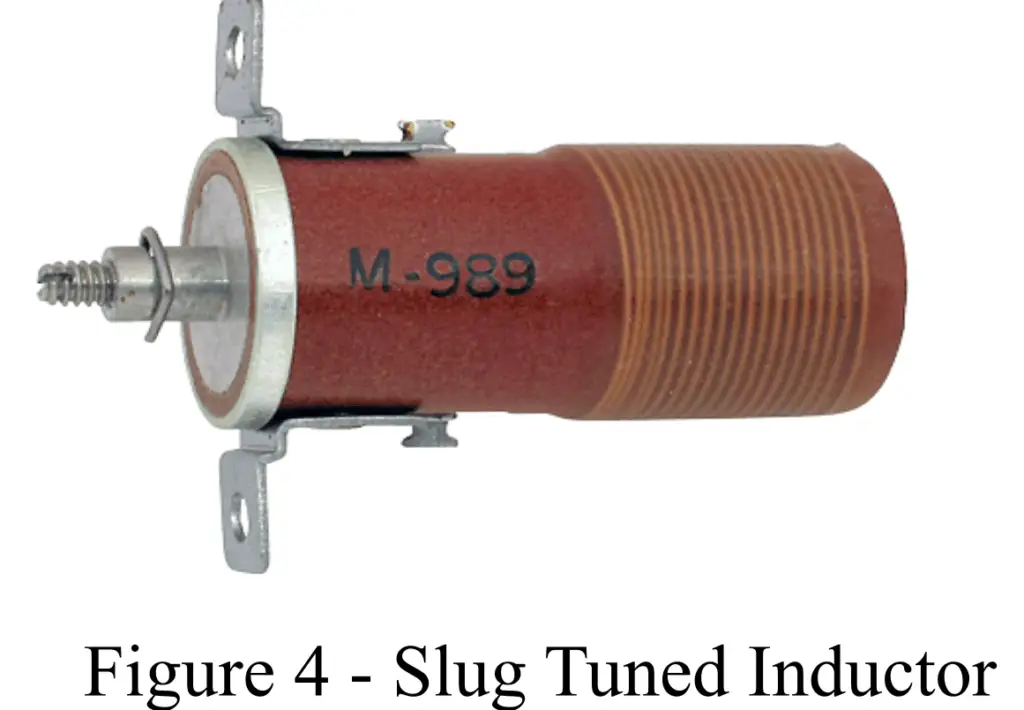In this article, we will discuss the variable inductor, its construction, working, types, and applications. But, before that let us have a look into the basics of inductors first.
Inductor
An inductor is a two-terminal passive circuit element used in different electrical and electronic circuits to introduce inductance. Inductance is the property of an inductor that can store electrical energy in the form of a magnetic field.
Therefore, we may also define an inductor as under:
An electric circuit element that stores electrical energy in the form of a magnetic field is known as an inductor.
An inductor is constructed by twisting a conductor wire of finite length into a coil. Hence, a typical inductor has a finite number of turns and forms a winding or coil-like structure.
The amount of energy stored in the magnetic field of an inductor is expressed in terms of current through the inductor and inductance of the inductor, i.e.

Where, L is the inductance of the inductor, measured in Henry (H). The inductance of an inductor can be expressed in terms of magnetic flux and current through the inductor, i.e.

In practice, depending on the design and construction, several types of inductors are available such as air core inductors, iron core inductors, variable inductors, etc.
In this article, we shall confine our attention to the variable inductor and its aspects only.
What is a Variable Inductor?
As the name implies, a variable inductor is a type of inductor whose inductance value can be adjusted as per the circuit requirements. Thus, the variable inductors are suitable for those circuits that require variation in the inductance. The circuit symbol of a variable inductor is shown in Figure 1.

The inductance value of the variable inductors typically ranges from 10 nH to 100 mH.
Construction and Working of Variable Inductor
A variable inductor can be constructed by winding a conductor wire (copper wire) around a hollow cylinder. The inductance of the variable inductor is then changed by inserting and moving a magnetic core in the hollow space of the cylinder. The inductance can be increased by moving the magnetic core to the middle of the inductor winding. To reduce the inductance value, we move the magnetic core out of the inductor winding.

Thus, by changing the position of the magnetic core of the variable inductor inside the winding, the inductance of the inductor can be changed. The inductance of the variable inductor changes with the change in the position of the core due to the fact that the movement of the core changes the permeability of the magnetic flux path and hence the inductance.
Hence, when the magnetic core is moved into the inductor coil, it enhances the magnetic permeability of the inductor and hence, increases the inductance. Whereas, moving the magnetic core out of the inductor coil reduces the magnetic permeability of the inductor, and hence reduces the inductance of the inductor.
Types of Variable Inductors
There are two types of variable inductors available, namely,
Tapped Variable Inductor
The type of variable inductor in which several contact points (tap points) are available along its length is known as a tapped variable inductor. The tapped variable inductor is constructed with a large number of turns wound around a magnetic core with tap points. A typically tapped inductor is shown in Figure 3.

Slug Tuned Inductor
A type of variable inductor that has a changeable magnetic core is referred to as a slug-tuned inductor. The value of the inductance of a slug-tuned inductor is changed by moving in or out of the magnetic core. The construction of a slug-tuned inductor is similar to a fixed core inductor, except it has a movable core. A typical slug-tuned inductor is shown in Figure 4.

Characteristics of Variable Inductor
A variable inductor possesses the following important characteristics-
- The inductance of the variable inductor can be changed as per the requirements of the circuit to which it is connected.
- Variable inductors have a modifiable magnetic core.
- The variable inductors mostly take a cylindrical shape.
- The quality factor (Q-factor) of the variable inductor is relatively high.
- Variable inductors have low parasitic capacitance.
- The variable inductors have excellent high-frequency performance.
Applications of Variable Inductors
The important applications of variable inductors are listed as follows-
- Variable inductors are used in tuning circuits of radios and TV receivers.
- Variable inductors are also used in coupling circuits.
- They are used in oscillators.
- Variable inductors are used in timing circuits.
- Variable inductors are used in sensitive electronic circuits where continuous variation in inductance is required.
- Variable inductors are also used in power factor correction panels.
- They are used in telecommunication systems to control the circuit impedance.